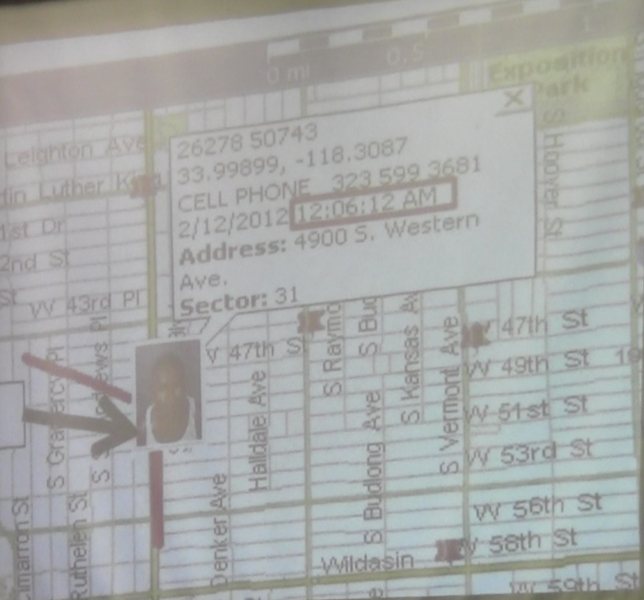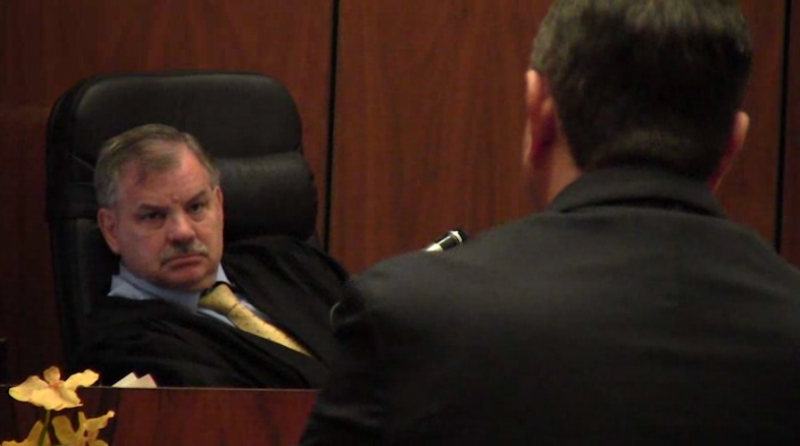Javier Bolden Trial: Cell Phone Usage Key Evidence in Trial

“That’s my baby brother in there,” said Bolden’s older brother, Deancy, to Neon Tommy in the hallway outside the courtroom. When asked about the case he said, “I think it’s all heresy. I don’t think they know all the facts, I think they’re just going off what they heard.”
Javier Bolden is facing charges of first degree murder, attempted murder, and assault with a firearm. Bolden, along with Bryan Barnes, is accused of killing two University of Southern California students—Ming Qu and Ying Wu—as they sat in their car on a rainy April night in 2012.
Witnesses Take the Stand
The fifth day of the trial started with the lead detective in the case, Detective Vincent Carreon, taking the stand. The prosecution showed the rest of a video of two Los Angeles Police Department detectives interrogating Bolden. Carreon explained that ultimately the LAPD detectives used a ruse in order to force Bolden to be more truthful.
SEE ALSO: Two USC Students Killed In Apparent Carjacking Attempt
Carreon, a detective since 1995, was assigned to the case from the very beginning. Andrew Goldman, Bolden’s defense attorney, asked Carreon during the cross-examination if Bolden’s fingerprints were found anywhere on the BMW the victims were driving. Carreon said no.
Following Carreon was the lead medical examiner in the case, Dr. Vladimir Levicky. Levicky has over 24 years of experience in forensic pathology. He discussed Ming Qu’s autopsy. Levicky used a yardstick and the prosecutor, Daniel Akemon, to show that the bullet entered below the left ear and exited through the right cheek.
“The cause of death was a gunshot wound of the neck and head,” said Levicky. “The gunshot wound caused a severe loss of blood in a very short time. He basically bled to death.”
Setting the Groundwork
The rest of the witnesses were called forward to set the groundwork for a single idea: cell phone usage the night of the crime.
Three witnesses were called forward to discuss the idea that once a phone is set up, calls and locations can be tracked. Stefano Bowe, an employee at Track Phone and Luisa Aznaraez, an AT&T retail sales manager, both explained that phones all have a unique serial number, account number and phone number linked to that phone.
Ronald Witt, a senior specialist in law enforcement group for T-Mobile also took the stand.
12:55 p.m.

Hansen, a member of the the FBI Cellular Analysis Survey Team (CAST), explained that all cell towers have sectors. By using a wireless optimization platform and by taking measurements, the detective can figure out where phone calls are made.
SEE ALSO: Javier Bolden's Mom: 'My Son Didn't Kill Nobody'
Hansen and Akemon then went point-by-point through the evening, showing evidence that Barnes and Bolden’s phones were used at 12:55 p.m., then, based on evidence gathered through calls and texts, both phones traveled south then made their way back to the residence where Barnes was later arrested.
The victims cell phones also traveled south and ended up at Barnes home. Hansen testified that Wu’s cell phone was used in the area of Barnes’ residence later in the morning on April 11 .
However, just because the phones traveled south, does not mean that Bolden was the one holding them.
“Are you able to tell whose actually using the phone when the phone is in use?” asked Goldman during the cross examination.
“No,” said Hansen.
The End of the Trial
The trial expects to begin wrapping up on Thursday with closing statements. The trial will then go the jury.
“I hope he comes home,” said Deancy. “He’s my family. I just hope he comes home.”
Visit Neon Tommy for more updates of the trial.
Reach Senior News Editor Rebecca Gibian here or follow her on Twitter here.



